Needlepoint stitch guides are essential tools providing clear instructions, diagrams, and thread recommendations. They help users choose appropriate stitches and materials, enhancing creativity and ensuring project success for all skill levels.
What Are Needlepoint Stitch Guides?
Needlepoint stitch guides are detailed instructional resources designed to help crafters successfully complete needlepoint projects. These guides typically include diagrams, step-by-step instructions, and recommendations for thread colors and brands. They often accompany specific needlepoint canvases, providing stitchers with a clear roadmap to achieve the desired design. Stitch guides can be commercial, custom, or free, catering to various skill levels and project requirements. They are essential for ensuring that stitches are executed correctly, materials are used effectively, and the final piece meets its artistic potential. Whether for beginners or experienced stitchers, needlepoint stitch guides enhance creativity and confidence, making the stitching process enjoyable and rewarding. They are a valuable tool for anyone looking to master needlepoint techniques and bring their projects to life with precision and artistry.
Importance of Stitch Guides in Needlepoint
Stitch guides are fundamental to the success of needlepoint projects, offering clear, step-by-step instructions that ensure stitches are executed correctly. They provide essential guidance for selecting appropriate materials, threads, and techniques, making the process more efficient and enjoyable. Whether for beginners or experienced stitchers, these guides enhance creativity by outlining how to bring a design to life. By following a stitch guide, crafters can avoid common mistakes, save time, and achieve professional-looking results. The detailed diagrams and thread recommendations also help in maintaining consistency and balance in the stitching. Additionally, stitch guides serve as valuable learning tools, helping stitchers master new techniques and expand their skills. Ultimately, they empower crafters to focus on the artistic aspects of needlepoint, knowing the technical details are well-covered. This makes stitch guides indispensable for anyone aiming to create beautiful and intricate needlepoint designs.

Basics of Needlepoint
Needlepoint is a versatile form of hand embroidery on open-weave canvas, using various stitches and materials; It’s perfect for all skill levels, offering endless creativity and personalization for unique stitching projects.
What is Needlepoint?
Needlepoint is a traditional form of hand embroidery performed on an open-weave canvas. It involves creating intricate designs by stitching yarn or thread through the canvas mesh. This craft allows for a wide range of artistic expression, as it can incorporate various stitches, colors, and materials. Needlepoint projects often cover the entire canvas, making it a versatile medium for creating decorative items like cushions, rugs, and wall hangings. Unlike cross-stitch, which typically uses a counted method on a specific fabric type, needlepoint is more flexible, allowing stitchers to adapt designs to their skill level and personal style. Whether for beginners or experienced crafters, needlepoint offers a rewarding creative outlet that combines precision with artistry.
Differences Between Needlepoint and Cross-Stitch
Needlepoint and cross-stitch are both popular needlework techniques, but they differ significantly in materials, methods, and outcomes. Needlepoint is worked on an open-weave canvas, allowing for a wide variety of stitches and greater flexibility in design. It often covers the entire canvas, making it suitable for detailed, textured designs. Cross-stitch, on the other hand, is typically done on aida or evenweave fabric and relies on x-shaped stitches to create patterns. Cross-stitch designs are usually counted from a chart, making them more structured and less free-form. While needlepoint can be used for three-dimensional or large-scale projects, cross-stitch is often preferred for flat, graphic designs. Both crafts require patience and skill but cater to different creative preferences and project goals.
Essential Materials for Needlepoint
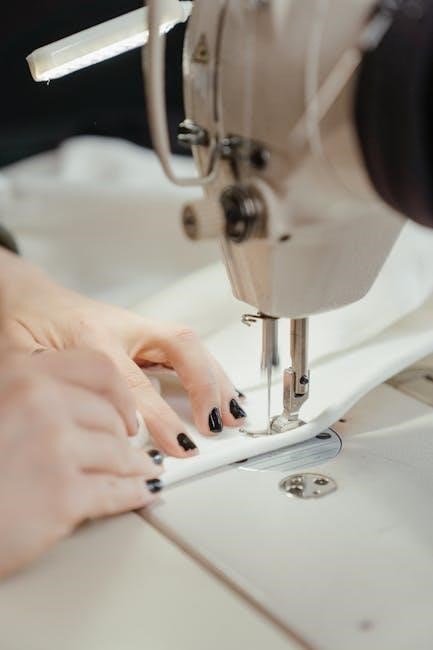
Needlepoint requires specific materials to ensure successful and enjoyable stitching. The primary material is an open-weave canvas, typically made of cotton or linen, available in various mesh sizes (e.g., 18 Mesh for detailed work). High-quality embroidery scissors are essential for cutting threads cleanly. A blunt-tapestry needle is preferred for its large eye and blunt tip, preventing canvas damage. Threads are a key component, with options ranging from wool, silk, and cotton to metallic and specialty fibers for texture and visual interest. Additional tools include a needle threader, tapestry hoop or stretcher bars for maintaining canvas tension, and a magnifying light for intricate stitching. Some stitchers also use stitch guides or charts to plan and execute designs effectively. Proper materials ensure precision, comfort, and a professional finish for needlepoint projects.
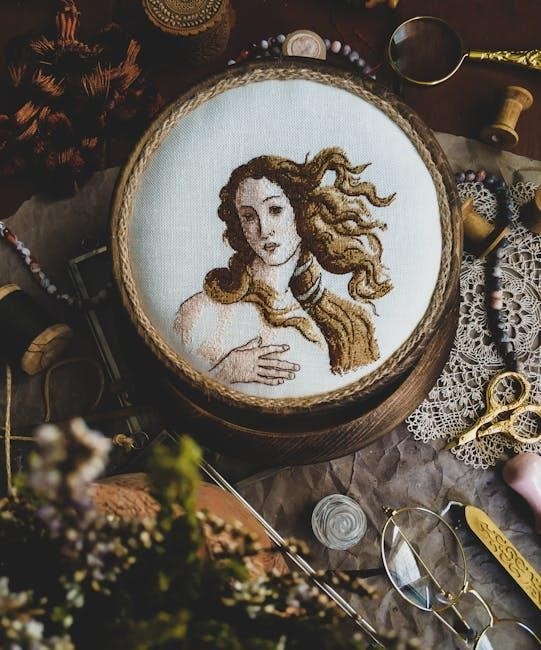
Types of Needlepoint Stitch Guides
Needlepoint stitch guides are categorized into commercial, custom, and canvas-specific varieties. They also include free guides, offering diverse options for stitchers to enhance their projects with detailed instructions and thread recommendations.
Commercial Stitch Guides
Commercial stitch guides are widely available for purchase and provide detailed instructions for specific needlepoint projects. They often include color copies, diagrams, and thread recommendations, ensuring users can replicate the design accurately. These guides are typically designed to accompany particular canvases, enhancing their beauty with carefully chosen stitches and threads. Many commercial guides are created by experienced stitchers or designers, offering a professional touch. They may also include tutorials for popular stitches, making them accessible to stitchers of all skill levels. Whether you’re working on a holiday ornament or a complex scene, commercial stitch guides offer a reliable resource to achieve stunning results. They are an excellent starting point for those new to needlepoint, as they provide a clear roadmap to completing a project successfully. Examples include guides for canvases like the Square Fluffle of Bunnies, which offer step-by-step instructions for a polished finish.
Custom Stitch Guides
Custom stitch guides are tailored to individual projects or stitchers, offering personalized instructions based on skill level, thread preferences, and design complexity. These guides are often created for specific canvases, ensuring stitches and threads align perfectly with the artwork. They may include detailed diagrams, step-by-step instructions, and thread usage charts to enhance the stitching experience. Custom guides can accommodate unique requests, such as avoiding certain stitches or fibers, making them ideal for stitchers with specific needs. Professional designers or instructors often craft these guides, providing expert advice to elevate the project’s quality. Whether for beginners or advanced stitchers, custom guides offer a bespoke approach, ensuring every stitch enhances the canvas’s beauty. They are particularly valuable for complex or one-of-a-kind designs, offering a seamless stitching process from start to finish.
Stitch Guides for Specific Canvases
Stitch guides for specific canvases are designed to complement particular hand-painted needlepoint designs. These guides provide detailed instructions, thread recommendations, and stitch diagrams tailored to the unique elements of the canvas. They often include step-by-step directions to help stitchers achieve the intended look, ensuring that the stitches and threads enhance the artwork. Many canvas designers offer these guides as companions to their work, making it easier for stitchers to bring the design to life. Whether purchased separately or included with the canvas, these guides are invaluable for achieving professional-quality results. They are particularly useful for complex or intricate designs, where choosing the right stitch and thread is crucial. By following the guide, stitchers can ensure their project turns out as envisioned, with every stitch and color choice carefully curated for the specific canvas.
Free Needlepoint Stitch Guides
Free needlepoint stitch guides are an excellent resource for stitchers of all levels. These guides often include basic stitches, tutorials, and diagrams to help beginners get started. Many websites and needlepoint communities offer complimentary guides for popular canvases, such as holiday-themed designs or simple ornaments. Some designers provide free guides as part of their collections, allowing stitchers to explore new techniques without cost. These guides typically cover essential stitches, thread recommendations, and step-by-step instructions. They are a great way to learn fundamental skills or experiment with different styles before investing in paid guides. Additionally, free stitch guides are often shared in online forums and social media groups, fostering a sense of community among needlepoint enthusiasts. Whether you’re practicing basic stitches or trying out a new project, free guides offer a convenient and accessible way to enhance your needlepoint journey.
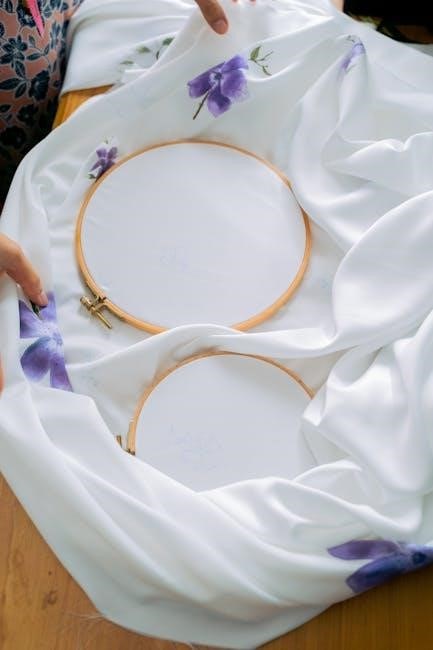
Designing a Needlepoint Stitch Guide
Designing a needlepoint stitch guide involves selecting stitches, creating diagrams, and specifying thread usage. It ensures projects are clear, accessible, and tailored to stitchers of all skill levels.
Process of Creating a Stitch Guide
Creating a needlepoint stitch guide involves several steps, starting with understanding the project’s goals and the stitcher’s skill level. Designers select appropriate stitches, threads, and techniques to enhance the canvas’s design. They then draft detailed instructions, often accompanied by diagrams or charts to illustrate stitch placement and sequence. Thread recommendations, including brands and colors, are carefully noted to ensure the desired aesthetic. The guide is formatted for clarity, with step-by-step instructions and visual aids to make it user-friendly. Custom guides may also consider the stitcher’s preferences, such as avoiding certain threads or stitches. Finally, the guide is reviewed and tested to ensure accuracy and ease of use before being shared with stitchers.
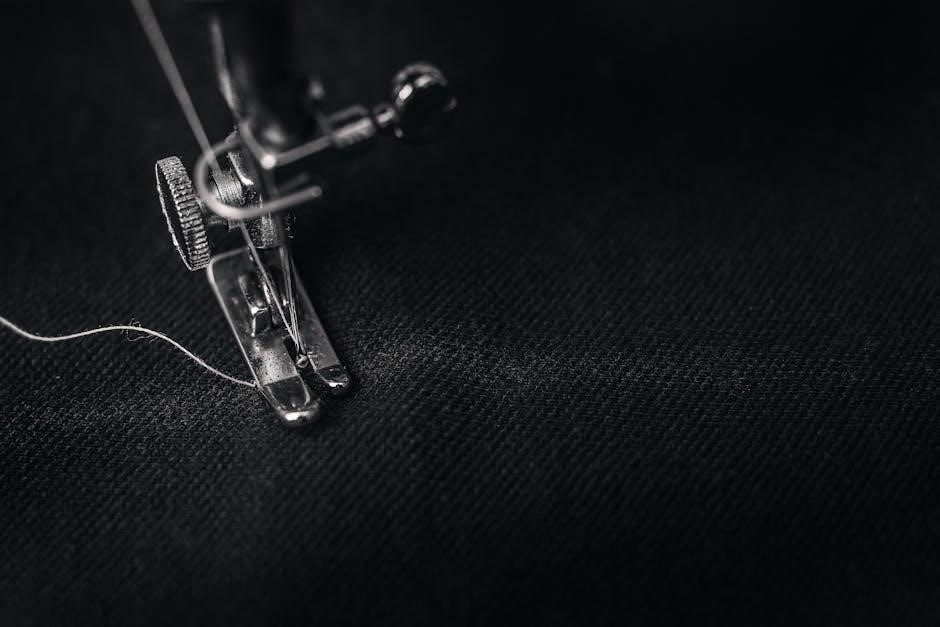
Tips for Writing Effective Stitch Guides
Writing effective needlepoint stitch guides requires clarity, organization, and attention to detail. Start by understanding your audience’s skill level to tailor instructions appropriately. Use clear, concise language and include diagrams or charts to illustrate complex stitches. Organize the guide logically, breaking projects into manageable sections. Provide thread recommendations, specifying brands and colors to ensure consistency. Consider stitchers’ preferences, such as avoiding certain threads or stitches; Test the guide with a small group to identify and correct any ambiguities. Finally, format the guide for readability, using bullet points or numbered lists for step-by-step instructions. These tips ensure your stitch guide is both informative and user-friendly, enhancing the stitching experience for all levels of needlepoint enthusiasts.
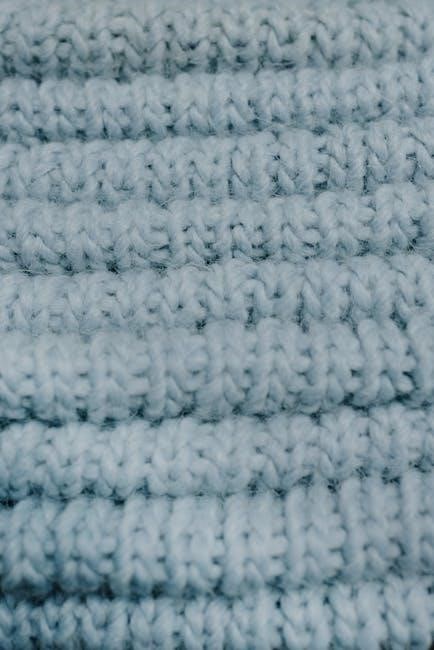
Software and Tools for Stitch Guide Design
Designing effective needlepoint stitch guides often requires specialized software and tools. Programs like Adobe Illustrator or Photoshop are popular for creating detailed diagrams and charts. For embroidery-specific needs, software like StitchArtist or PE Design offers advanced features for custom stitch patterns. Online platforms like Canva or Google Drawings provide user-friendly interfaces for layout and design. Additionally, tools like GIMP and Inkscape offer free alternatives for creating vector graphics and scalable designs. Many designers also use digital tools to visualize and test stitches before finalizing guides. These software options enable creators to produce professional-looking stitch guides with precision and creativity, catering to both beginners and advanced stitchers.
Digital tools simplify the process, ensuring guides are clear, visually appealing, and easy to follow.
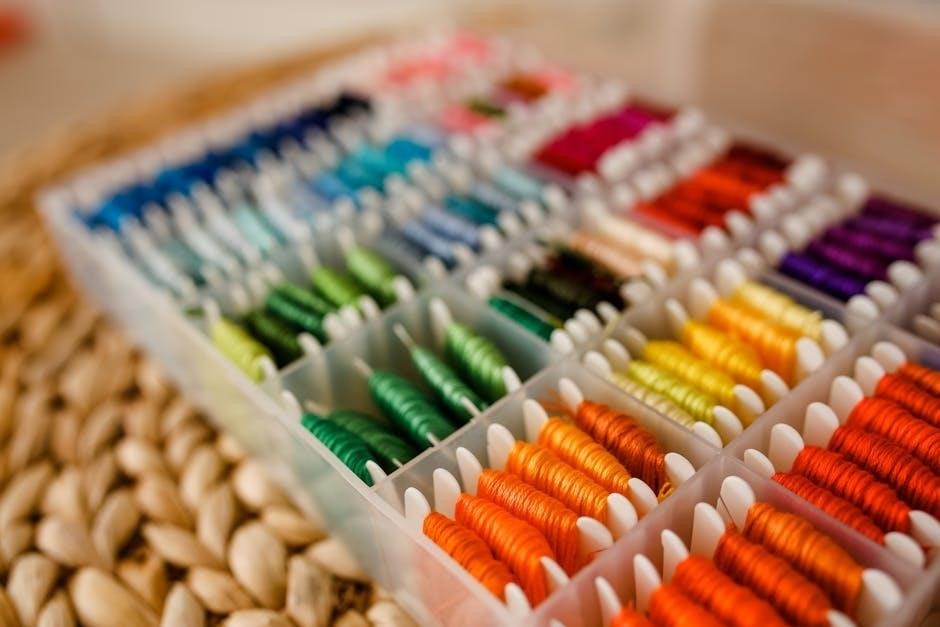
Popular Needlepoint Stitches
Popular needlepoint stitches include the versatile Blanket Stitch, the foundational Tent Stitch, and the decorative Basketweave Stitch. These stitches are widely used for their simplicity, versatility, and ability to create texture and detail in designs.
Basic Stitches for Beginners
Mastering basic needlepoint stitches is essential for beginners to build a strong foundation. The Tent Stitch is the most fundamental, creating a smooth, even surface ideal for backgrounds. The Continental Stitch is another simple option, worked in a straightforward manner, perfect for covering large areas quickly. For outlining and detailing, the Blanket Stitch is a versatile choice, preventing canvas edges from fraying while adding decorative borders. These stitches are easy to learn and form the basis for more complex designs. Practicing these stitches helps develop muscle memory and improves stitching consistency. Starting with these basics allows beginners to gradually explore more intricate patterns and techniques, ensuring a smooth transition into intermediate and advanced stitching. With patience and practice, these foundational stitches will become second nature, enhancing the overall quality of needlepoint projects. They are the building blocks for every successful needlepoint creation.
Intermediate Stitches
Once beginners are comfortable with the basics, intermediate stitches offer a way to add texture and interest to needlepoint projects. The Mosaic Stitch is a popular choice, creating a dense, textured effect perfect for geometric patterns. The Woven Stitch mimics the look of woven fabric, adding depth and visual appeal. For those looking to add movement, the Diagonal Stitch is ideal, creating dynamic lines across the canvas. These stitches are slightly more complex but still accessible, allowing stitchers to explore new techniques without feeling overwhelmed. They are particularly useful for filling mid-sized areas and adding dimension to designs. Intermediate stitches also introduce stitchers to working with multiple threads and yarns, enhancing the visual impact of their work. By mastering these stitches, needlepoint enthusiasts can expand their creative possibilities and tackle more intricate projects with confidence. These stitches are a bridge between simplicity and advanced techniques, offering endless opportunities for artistic expression.
Advanced Stitches
Advanced needlepoint stitches are designed for experienced stitchers looking to add intricate details and depth to their projects. These stitches often require precision and patience, offering complex patterns that elevate designs to new heights. The Byzantine Stitch is a prime example, creating a textured, three-dimensional effect that adds visual interest. The Tramsonde Stitch is another advanced option, ideal for creating flowing, intricate lines; These stitches are perfect for filling detailed areas and adding layers to a design. Advanced stitches also allow for greater creativity, enabling stitchers to experiment with multiple threads and yarns for unique effects. They are particularly useful for capturing fine details in complex patterns and adding realism to needlepoint art. Mastering advanced stitches requires practice, but they offer endless possibilities for those seeking to push the boundaries of their needlepoint skills and create truly exceptional pieces.
Using a Stitch Guide for Your Project
A stitch guide provides step-by-step instructions, color diagrams, and thread recommendations, helping you navigate your needlepoint project with confidence. It ensures accuracy, enhances creativity, and troubleshoots common challenges, making your stitching journey seamless and enjoyable.
Step-by-Step Guide to Following a Stitch Guide
Using a needlepoint stitch guide effectively involves several key steps. Start by gathering all materials, including the canvas, threads, and needles specified in the guide. Review the guide thoroughly, paying attention to color diagrams and stitch instructions. Begin stitching in the center of the canvas to maintain even tension and follow the recommended sequence of stitches. Refer to diagrams for stitch placement and thread usage, ensuring accuracy. Complete one section at a time to avoid confusion. If unsure, consult additional resources like tutorials or join needlepoint communities for support. Regularly check your work against the guide to catch errors early. Finish by blocking your canvas to enhance the final result. Patience and adherence to the guide will yield a beautiful, professional-quality needlepoint piece.
- Start with the materials listed in the guide.
- Stitch from the center outward for even tension.
- Follow the sequence of stitches and threads provided.
- Refer to diagrams for precise stitch placement.
- Complete one section before moving to the next.
- Consult additional resources if needed.
- Block your canvas for a polished finish.
By following these steps, you can achieve a stunning needlepoint project tailored to your skill level and design preferences.
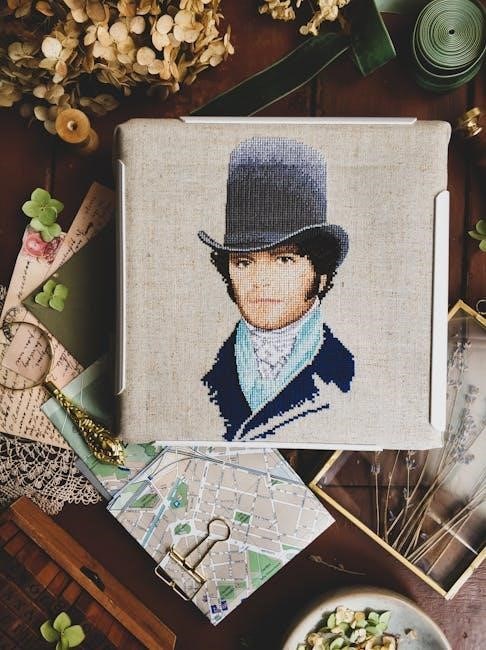
Troubleshooting Common Mistakes
When following a stitch guide, common mistakes can arise, such as uneven tension, misaligned stitches, or incorrect thread usage. To address these issues, start by identifying the root cause. If stitches are too tight or loose, adjust your tension by gently stretching the canvas or using a stretcher frame. Misaligned stitches can be fixed by carefully counting threads and referring back to the guide’s diagrams. Incorrect thread usage can be resolved by cross-referencing the guide’s color and fiber recommendations. Prevent mistakes by using high-quality materials and maintaining consistent stitching habits. Regularly reviewing your work and comparing it to the guide can help catch errors early. If difficulties persist, seek guidance from online tutorials, needlepoint communities, or workshops. Patience and attention to detail are key to overcoming challenges and achieving a polished finish.
- Adjust tension to prevent uneven stitching.
- Count threads carefully to align stitches properly.
- Use recommended threads for best results.
- Regularly compare work to the guide.
- Seek help from resources if needed.
Customizing Your Stitch Guide
Customizing your stitch guide allows you to tailor the project to your preferences and skill level. You can adjust stitch selection, thread usage, and even the sequence of stitching to suit your needs. For instance, if a guide recommends a stitch you find challenging, you can substitute it with a similar one. Thread preferences, such as avoiding certain fibers or colors, can also be incorporated. Some guides offer flexibility in substituting threads, ensuring you can work with what’s available. Additionally, you can combine stitches from multiple guides to create a unique design. To customize effectively, review the guide thoroughly, note areas for adjustment, and plan changes before stitching. Using diagrams and written instructions together can help maintain clarity. For complex adjustments, consider consulting tutorials or expert advice to ensure your modifications align with the canvas design.
- Adjust stitches based on skill level or preference.
- Substitute threads to match availability or taste.
- Combine stitches from multiple guides for a unique look.
- Plan changes carefully to maintain design integrity.
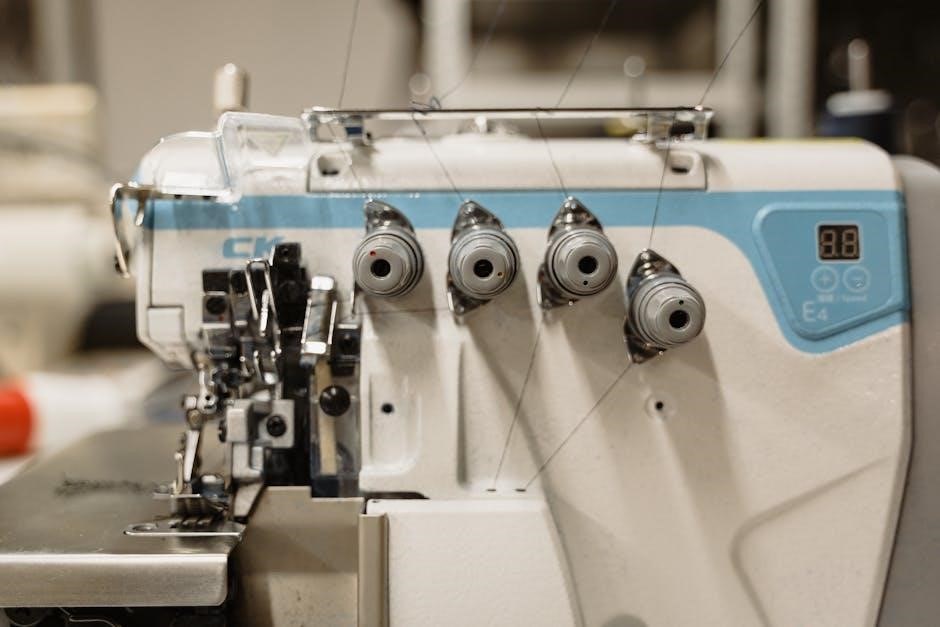
Resources and Support
Discover online tutorials, communities, and workshops offering needlepoint tips, step-by-step guides, and expert advice. These resources provide invaluable support for stitchers of all skill levels, enhancing their stitching journey.
Online Tutorials and Videos
Online tutorials and videos provide step-by-step instructions for mastering needlepoint stitches and techniques. These resources are ideal for visual learners, offering demonstrations of basic, intermediate, and advanced stitches. Many websites and YouTube channels specialize in needlepoint, sharing detailed guides, tips, and project ideas. Tutorials often cover topics like choosing the right materials, understanding stitch diagrams, and troubleshooting common mistakes. Some platforms also offer free stitch guides and patterns to complement their video content. Whether you’re a beginner or an experienced stitcher, online tutorials are a valuable tool for improving your skills and staying inspired. They allow you to learn at your own pace and explore new stitching possibilities from the comfort of your home. This accessible format makes needlepoint more approachable and enjoyable for crafters worldwide.
Needlepoint Communities and Forums
Needlepoint communities and forums are vibrant spaces where stitchers gather to share knowledge, ideas, and inspiration. These platforms, both online and in-person, offer invaluable support for enthusiasts of all skill levels. Local shops like the Quarter Stitch and NeedleArts host gatherings, while online forums provide global connections. Members often discuss techniques, troubleshoot challenges, and showcase their projects. Many communities also offer access to custom stitch guides, tutorials, and tips from experienced stitchers. These groups foster creativity and camaraderie, helping individuals refine their skills and explore new stitching possibilities. Whether through shared resources or personalized advice, needlepoint communities are essential for anyone looking to enhance their crafting journey and connect with like-minded enthusiasts. They serve as a cornerstone for learning, growing, and enjoying the art of needlepoint.
Workshops and Classes
Workshops and classes are excellent ways to master needlepoint techniques and explore advanced stitches. Many experienced instructors, like Laura Taylor, offer comprehensive sessions tailored for all skill levels. These hands-on learning opportunities allow participants to receive personalized feedback and guidance. Workshops often cover topics such as selecting the right stitches for a canvas, understanding thread choices, and troubleshooting common mistakes. They also provide a chance to learn from experts who share tips and techniques honed over years of experience. Custom stitch guides are frequently used in these classes to ensure students have clear, step-by-step instructions. Additionally, workshops foster a sense of community, enabling stitchers to connect with others who share their passion. Whether you’re a beginner or an advanced stitcher, attending a workshop can elevate your needlepoint skills and inspire new creative projects. These educational resources are invaluable for anyone looking to refine their craft.
Needlepoint stitch guides are invaluable resources for crafters, offering detailed instructions, thread recommendations, and step-by-step diagrams. They cater to all skill levels, from beginners to advanced stitchers, ensuring projects are completed with precision and creativity. Whether you prefer commercial guides, custom designs, or free tutorials, there’s a stitch guide available to suit your needs. These tools not only enhance the stitching experience but also foster a sense of community, as stitchers share knowledge and techniques online or in workshops. By providing clear guidance and inspiration, needlepoint stitch guides empower artisans to create beautiful, professional-looking pieces. They are essential for mastering the craft and unlocking the full potential of needlepoint embroidery.